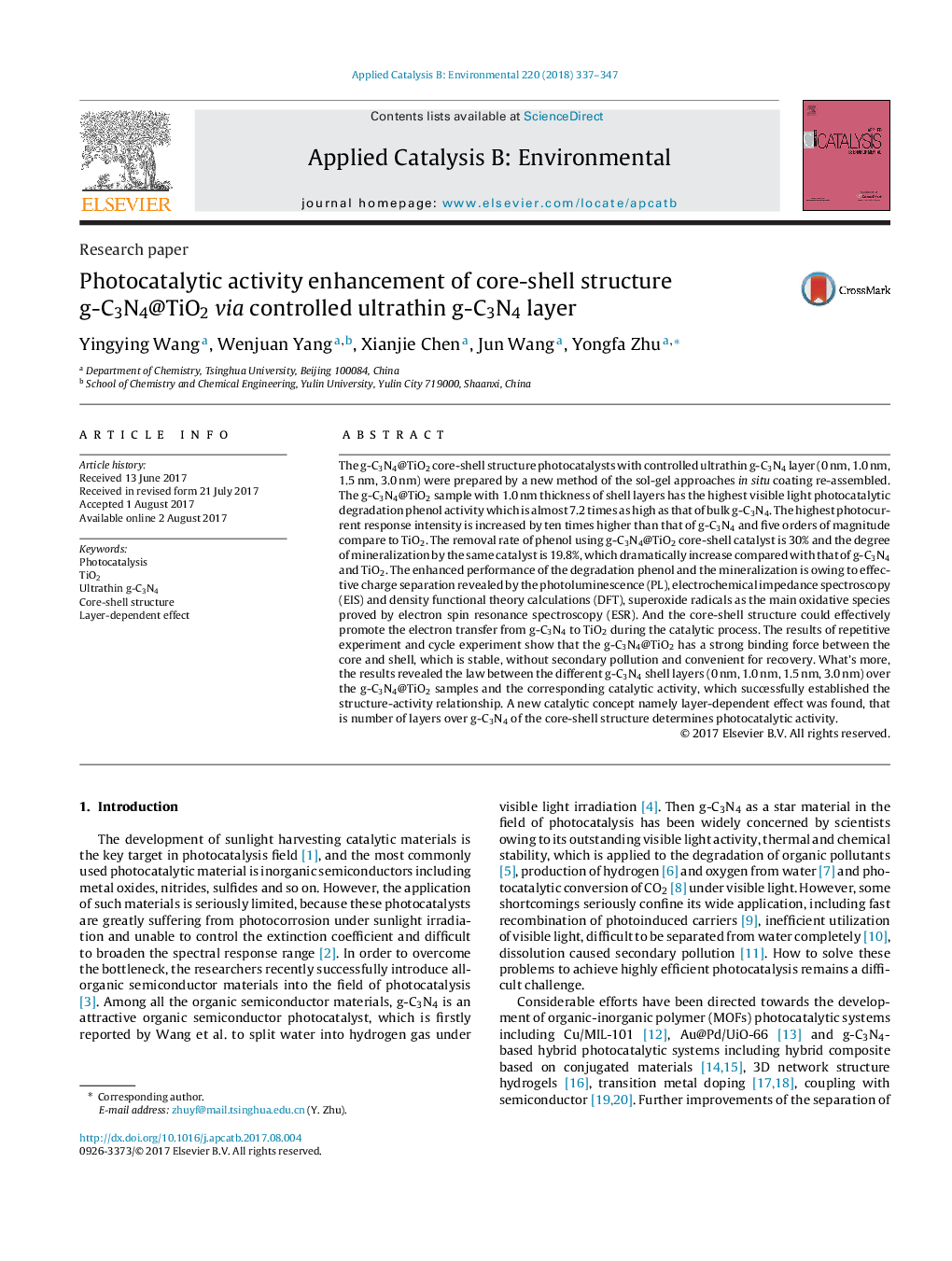| کد مقاله | کد نشریه | سال انتشار | مقاله انگلیسی | نسخه تمام متن |
|---|---|---|---|---|
| 6453608 | 1418800 | 2018 | 11 صفحه PDF | دانلود رایگان |

- The core-shell structure g-C3N4@TiO2 with controlled ultrathin g-C3N4 layer were fabricated using sol-gel approaches in situ coating re-assembled.
- The g-C3N4@TiO2 sample with 1.0Â nm thickness of shell layers has almost 7.2 times as high as that of bulk g-C3N4 visible light photocatalytic degradation phenol activity.
- The removal rate of phenol using g-C3N4@TiO2 core-shell catalyst is 30% and the degree of mineralization by the same catalyst is 19.8%.
- The structure-activity relationship between different g-C3N4 shell layers and the corresponding catalytic activity successfully established.
- The layer-dependent effect is scrutinized by experiments and DFT calculations, which can provide the basis for the design of other organic-inorganic core-shell structure photocatalytic system.
The g-C3N4@TiO2 core-shell structure photocatalysts with controlled ultrathin g-C3N4 layer (0Â nm, 1.0Â nm, 1.5Â nm, 3.0Â nm) were prepared by a new method of the sol-gel approaches in situ coating re-assembled. The g-C3N4@TiO2 sample with 1.0Â nm thickness of shell layers has the highest visible light photocatalytic degradation phenol activity which is almost 7.2 times as high as that of bulk g-C3N4. The highest photocurrent response intensity is increased by ten times higher than that of g-C3N4 and five orders of magnitude compare to TiO2. The removal rate of phenol using g-C3N4@TiO2 core-shell catalyst is 30% and the degree of mineralization by the same catalyst is 19.8%, which dramatically increase compared with that of g-C3N4 and TiO2. The enhanced performance of the degradation phenol and the mineralization is owing to effective charge separation revealed by the photoluminescence (PL), electrochemical impedance spectroscopy (EIS) and density functional theory calculations (DFT), superoxide radicals as the main oxidative species proved by electron spin resonance spectroscopy (ESR). And the core-shell structure could effectively promote the electron transfer from g-C3N4 to TiO2 during the catalytic process. The results of repetitive experiment and cycle experiment show that the g-C3N4@TiO2 has a strong binding force between the core and shell, which is stable, without secondary pollution and convenient for recovery. What's more, the results revealed the law between the different g-C3N4 shell layers (0Â nm, 1.0Â nm, 1.5Â nm, 3.0Â nm) over the g-C3N4@TiO2 samples and the corresponding catalytic activity, which successfully established the structure-activity relationship. A new catalytic concept namely layer-dependent effect was found, that is number of layers over g-C3N4 of the core-shell structure determines photocatalytic activity.
139
Journal: Applied Catalysis B: Environmental - Volume 220, January 2018, Pages 337-347